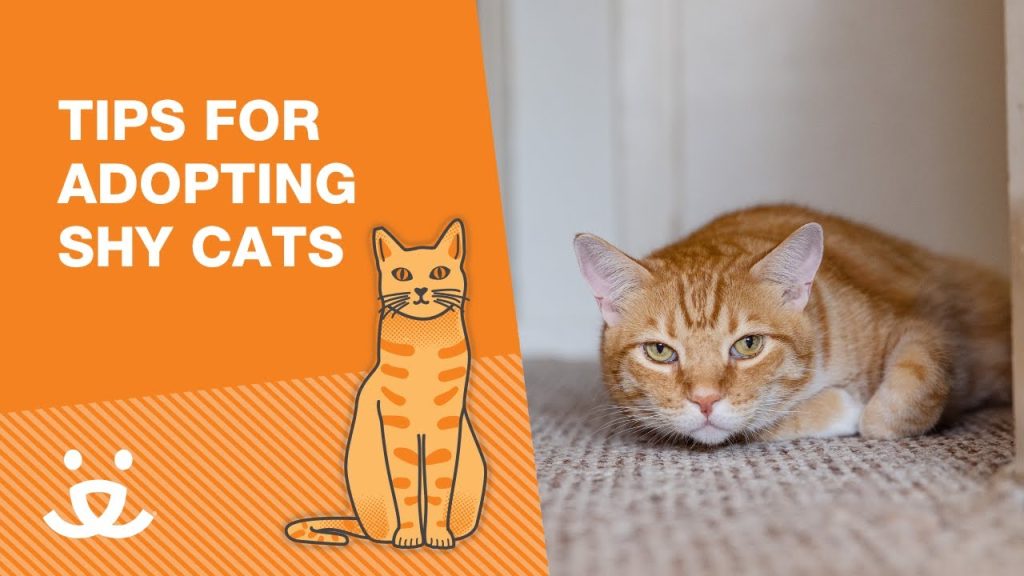Effective Training Techniques for Cats: Demystifying the Adaptation Process

Understanding Your Feline Friend
Training a cat can seem daunting; however, it is a rewarding experience that strengthens the bond between you and your pet. With the right effective training techniques, you can transform your cat from an independent creature into a well-mannered companion. The key lies in understanding the unique adaptation process of felines.
Why Training Matters
- Enhances Behavior: Proper training can significantly reduce unwanted behaviors, such as scratching furniture, knocking items off tables, or excessive meowing. For instance, by teaching your cat to use a scratching post instead of your couch, you preserve both your furniture and your sanity.
- Boosts Mental Stimulation: Engaging your cat in training prevents boredom, which can lead to destructive behaviors or aggression. Regular training sessions can stimulate your cat’s mind, making them happier and more content in their environment.
- Strengthens Bond: Training provides opportunities for quality interaction, helping to build trust and affection between you and your feline friend. When a cat learns that good behavior results in praise, treats, or playtime, it fosters a deeper connection.
Many people assume that cats cannot be trained as effectively as dogs, leading to the misconception that they are untrainable. This belief can discourage cat owners from exploring effective methods. In truth, cats are remarkably clever and can respond well to training. Just like dogs, they can learn a variety of commands, tricks, and even routines that enrich their lives and yours.
Key Techniques to Explore
When embarking on your cat’s training journey, consider these techniques that have proven successful:
- Positive Reinforcement: This involves rewarding behaviors you want to encourage. For instance, rewarding your cat with a treat when they come when called can help strengthen that behavior over time.
- Clicker Training: A clicker acts as a verbal marker that helps your cat understand what action earned them praise or a treat. The click sound signifies the exact moment of the desired behavior, making it a powerful communication tool.
- Short Training Sessions: Cats have shorter attention spans than dogs, so it is vital to keep sessions brief—about five to ten minutes. This helps maintain their focus and ensures the training remains fun.
As you delve into the world of cat training, you’ll discover nuances that make it different yet equally engaging compared to training dogs. Techniques that prioritize understanding your cat’s behavior and natural instincts will lead to success. For example, knowing when your cat is feeling playful can help you choose the best moments for training sessions, making them more fruitful.
Join us as we demystify these methods and guide you through effective practices that promote successful adaptation in your feline friend. With patience and creativity, the bond you cultivate through training will undoubtedly enhance your cat’s well-being and your own enjoyment of their company.

DON’T MISS OUT: Click here to learn about the signs of stress in your pets
Training Techniques Tailored for Cats
When it comes to effective training techniques for cats, it’s essential to remember that each feline is a unique individual with its personality and preferences. Unlike dogs, who are often eager to please, cats may view training more as a collaborative game, where rewards and interactions motivate their engagement. This understanding is fundamental as you embark on the journey to demystify the adaptation process of training your furry companion.
Emphasizing the Cat’s Natural Behavior
Cats are governed by instinct, and recognizing their natural behaviors can significantly enhance training efforts. Wild ancestors of domestic cats exhibit specific hunting and social behaviors, and feeding games can mimic these instincts. For instance, consider incorporating play-based training—using wand toys or laser pointers—can tap into your cat’s predatory nature while establishing positive associations with learning. Beyond merely urging your kitty to chase a toy, you are actually facilitating an outlet for its innate behaviors, which helps strengthen your bond.
The Art of Timing and Consistency
In the realm of cat training, timing is crucial. Cats are more successively trained when they receive immediate feedback for their actions. Therefore, pairing verbal praise or treats with positive behavior as it happens is vital. Ideally, you want your kitty to understand exactly what actions led to the rewards. This is where tools like clicker training come into play—they create a distinct sound that marks the desired behavior, allowing your cat to make the connection between the action and the reward seamlessly.
Steps to Implement Effective Training
When you’re ready to dive into training sessions, consider the following steps to maximize effectiveness:
- Start Small: Aim for basic commands and gradually increase complexity as your cat becomes more adept. Simple commands like “sit” or “high five” are excellent starting points.
- Choose the Right Environment: Keep training sessions in a calm space free of distractions. A quiet room can create a more conducive atmosphere where your cat can focus on you.
- Be Patient: Cats can have varied learning speeds. Give your feline friend the time it needs to grasp new concepts without frustration, and celebrate even small successes.
- End on a Positive Note: Always conclude sessions with a successful command or behavior, followed by rewards and praise. Ending on a high note will encourage your cat to look forward to future training sessions.
By employing these strategies, you are creating a structured and enjoyable experience that encourages your cat to engage with you while developing new skills. As you delve deeper into the nuances of training, anticipate setbacks but also recognize triumphs. Each interaction is an opportunity for enrichment, building not only your cat’s repertoire of skills but also the essential trust that strengthens your relationship.
As we delve deeper into the nuances of feline training, it’s essential to understand the various methods that can effectively facilitate a seamless adaptation process for your cat. Training your cat isn’t solely about instilling obedience; it’s about fostering a trusting relationship that enhances both your lives. Understanding your cat’s instincts and natural behaviors will enable you to employ techniques that are more in sync with their unique psychology.One of the most effective methods is positive reinforcement. This technique encourages desired behaviors by rewarding your cat with treats, praise, or playtime whenever they exhibit actions you want to promote. It’s critical to initiate this training in a calm environment to help minimize distractions and enhance focus. Notably, this method not only builds trust but also creates a positive atmosphere where your cat feels safe to explore new behaviors.Another remarkable technique is clicker training, which uses a small handheld device that emits a clicking sound as an immediate marker of a desired behavior. This technique is particularly effective because it provides clear communication to your cat. The sound of the click signals that they have done something right, which can then be followed by a reward. Utilizing a clicker can help accelerate learning, providing both you and your feline companion a gratifying and fun experience.Incorporating environmental enrichment is also essential in training cats. This involves modifying their surroundings to cater to their natural instincts, such as climbing, scratching, and hiding. Providing interactive toys, vertical spaces, or puzzle feeders allows cats to engage both physically and mentally, creating a stimulating environment where training becomes an enjoyable practice rather than a chore.Lastly, patience and consistency are the bedrock of successful training. Each cat has a unique pace of learning, and maintaining a consistent routine will aid in reinforcing the behaviors you wish to instill. Remember, every small achievement deserves recognition as it contributes to your cat’s overall confidence and willingness to adapt. Adopting these methods will not only promote effective training but also enhance your overall bond with your feline friend, paving the way for a deeper understanding and a harmonious cohabitation. As these techniques are implemented, it’s crucial to continuously observe and adapt your methods to suit the individual needs of your cat, thus ensuring a tailored approach to their specific training journey.
DISCOVER MORE: Click here for effective strategies
Positive Reinforcement: The Key to Successful Training
At the core of most successful training techniques for cats is the principle of positive reinforcement. This method revolves around rewarding desired behaviors rather than attributing punishments for undesired actions. Utilizing treats, affection, or playtime as rewards creates an environment where cats are encouraged to repeat behaviors that garner positive outcomes. Research has indicated that animals, including cats, are more likely to perform behaviors that are reinforced with positive stimuli, making this approach particularly effective.
Identifying Effective Rewards
Different cats respond to different types of rewards, so understanding what motivates your feline is crucial. For some, it may be their favorite treats, while for others, interactive play with a feather toy might be the key. It’s essential to experiment and observe what peaks your cat’s interest. For instance, if your cat seems particularly focused during playtime, you can use that to your advantage by employing play sessions as a reward after executing desired commands. Understanding these nuances not only enriches the training experience but also enhances the bond between you and your pet.
The Role of Environment in Learning
The environment where training occurs can significantly impact a cat’s ability to learn and adapt. Cats can be easily distracted, so choosing a quiet and familiar setting can lead to more effective training sessions. According to studies conducted on cat behavior, locations that offer minimal disturbances allow cats to focus better on their training. If your cat is easily overwhelmed, considering variables such as lighting, sounds, and the presence of other animals can contribute to a more conducive learning atmosphere.
Building a Training Routine
Creating a consistent training routine helps cats adapt to the process over time. Cats thrive on predictability, establishing a familiar pattern that makes them feel secure. Designating a specific time for training each day—perhaps 10-15 minutes during your cat’s most active hours—could promote improved focus and receptiveness. This consistent schedule aids in conditioning your kitty, making it more likely to engage and participate actively during these sessions.
Social Learning: Learning from the Environment
Interestingly, cats can also learn behaviors through observation—a concept known as social learning. This is important when considering multi-pet households or introducing new tricks. For example, if one cat has mastered a behavior, it may inspire another to engage in the same action. Capitalizing on this can maximize training sessions by allowing cats to learn from their peers, reinforcing the learned behavior through mimicry. Always supervise these interactions to ensure a safe and productive environment.
Incorporating Clicker Training
One popular method that combines timing, positive reinforcement, and clear communication is clicker training. By using a clicker to mark exact moments of desired behavior, you create a clear association in your cat’s mind. The click sound serves as both a prompt and immediate feedback that they have done well, followed instantly by a reward. The implementation of this technique can be particularly effective since it eliminates ambiguity, facilitating quicker learning on the part of your feline friend. Many cat owners have noted increased efficacy in training sessions when using clickers, showcasing the method’s vast potential.
As you explore these various approaches to cat training, it’s crucial to remain adaptable. Each cat is an individual with its own preferences and quirks; accommodating these nuances will not only enhance the effectiveness of your training sessions but will also foster a deeper connection between you and your furry companion. By combining different techniques and understanding your cat’s unique responses, you can make significant strides in navigating the adaptation process successfully.
DIVE DEEPER: Click here to learn more
Conclusion: Enhancing the Training Journey for Your Cat
In conclusion, mastering effective training techniques for cats is a pivotal step in ensuring a harmonious relationship between you and your feline friend. By employing principles of positive reinforcement, understanding the unique motivators for your cat, and creating an optimal training environment, you are setting the stage for a learning experience that is both enjoyable and productive. Remember, building a routine not only encourages consistency but also nurtures a sense of security in your cat, making them more receptive to learning.
Additionally, the concept of social learning opens new avenues in training, especially in multi-pet households where cats can learn from one another, enhancing their adaptability. Incorporating clicker training can significantly expedite the learning process, as the immediate feedback allows for clearer communication between you and your cat.
Ultimately, the journey of training your cat is an opportunity to deepen your bond while unlocking their potential. Embrace the nuances of your cat’s personality, stay patient, and adjust your techniques as necessary. By doing so, you’ll not only demystify the adaptation process but also transform training into a fulfilling experience that benefits both you and your beloved companion. As you embark on this rewarding adventure, always remember that patience, understanding, and a sprinkle of creativity are your best allies in effective cat training.



